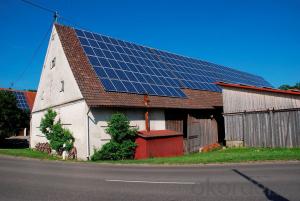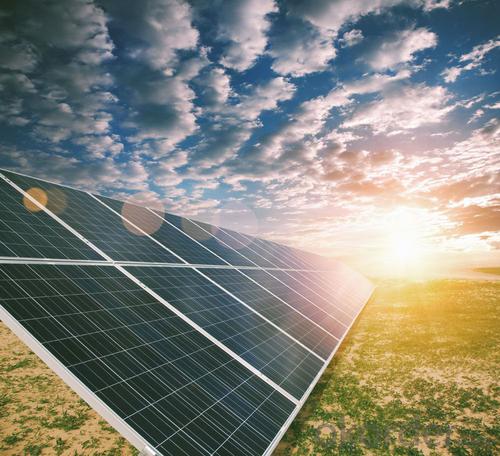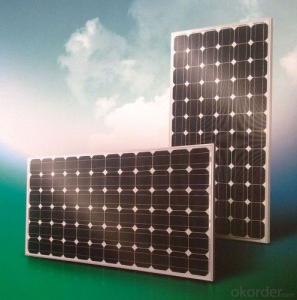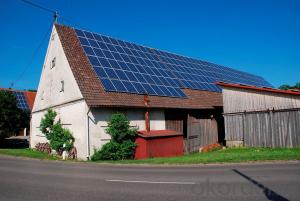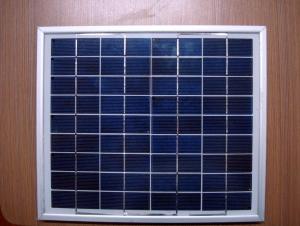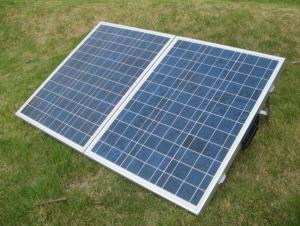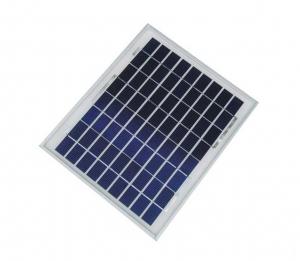310W Polycrystalline Silicon Solar Panel
- Loading Port:
- Ningbo
- Payment Terms:
- TT OR LC
- Min Order Qty:
- 200000 watt
- Supply Capability:
- 20000000 watt/month
OKorder Service Pledge
OKorder Financial Service
You Might Also Like
Introduction
This installation Manual contains essential information for the electrical and mechanical installation that your must know before installing CUSTOMER PV modules. This also contains safety information you need to be familiar with .All the information described in this manual are the intellectual property of CNBM and based on the technologies and experiences that have been acquired and accumulated in the long history of CUSTOMER. This document does not constitute a warranty, expressed or implied.
CUSTOMER does not assume responsibility and expressly disclaims liability for loss, damage, or expense arising out of in anyway connected with installation, operation, use or maintenance of the PV modules. No responsibility is assumed by CUSTOMER for any infringement of patents or other rights of third parties that may result from use of PV module.
CUSTOMER reserves the right to make changes to the product, specifications or installation manual without prior notice.
Solar cell module production process
Line called packaging line components, packaging is the production of solar cells a key step in the packaging process without a good, multi-well battery is also not a good component of production boards. Battery package not only the battery life is guaranteed, but also to enhance the combat strength of the battery. Product quality and high service life is to win can be the key to customer satisfaction, so the quality of components of the package board is very important.
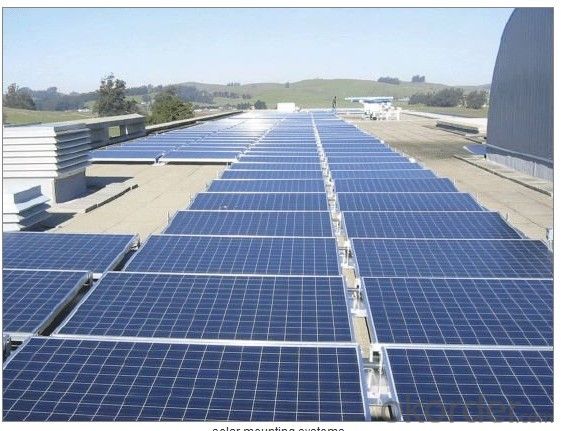
Data sheet
Maximum power | 310W |
Cell type(mm) | Polycrystalline solar cell 156*156 |
Number of cell(pcs) | 72(6*12) |
Manufacture site | China |
Open-circuit voltage(voc) | 45V |
Maximum power voltage(vmp) | 37V |
Short-circuit current(isc) | 8.8A |
Optimum operating current(imp) | 8.38A |
Power tolerance | 0~+5W |
Module efficiency | 16% |
Dimensions(mm) | 1956*992*40 |
Weight | 27 kg |
Backsheet | Silver |
Frame Colar | White |
Frame | Anodized Aluminum Alloy |
FAQ:
1. How long will my inquiry get response?
Your inquiry related to our products or prices will be replied within 24 hours.
2. Can I get professional service and suggestion?
Well-trained and experienced staffs to answer all your questions in fluent English.
3. Do you accept OEM or customized design?
OEM & ODM, any your customized lightings we can help you to design and put into product.
4. What if I need specific design?
Distributorship are offered for your unique design and some our current models.
- Q: Can solar panels be used for agricultural purposes?
- Yes, solar panels can be used for agricultural purposes. They can provide electricity for various agricultural operations such as irrigation systems, lighting, and powering machinery. Additionally, solar panels can be used to generate clean energy to reduce the carbon footprint of farming practices.
- Q: Can solar panels be installed on ski resorts?
- Yes, solar panels can be installed on ski resorts. In fact, many ski resorts have already implemented solar energy systems to reduce their reliance on traditional energy sources and lower their carbon footprint. Solar panels can be installed on rooftops, parking structures, or open spaces within the resort premises, providing clean and renewable energy to power various operations, such as lifts, lighting, and heating systems.
- Q: Can solar panels be installed on historic homes or buildings?
- Yes, solar panels can be installed on historic homes or buildings. However, it is important to consider the specific regulations and guidelines in place for historic preservation in each jurisdiction. In some cases, there may be restrictions on the placement and design of solar panels to ensure they do not detract from the historical integrity of the property. It is advisable to consult with preservation authorities or experts to determine the feasibility and appropriate approach for solar panel installation on historic structures.
- Q: So lets say that Everyday I use ,280 kWh. How many 250 watt solar panels would I buy so that I don't need to buy electricity anymore. Sorry if this sounds stupid, I am doing research on why american homes should become more cost efficient.
- Everyday I use ,280 kWh 280 kW-hour / 24 hours = 470 kW WOW, that is a very high power level, most homes use an average of .2 kW. My guess is that you mean you use 280 kW-hour in a year, which comes to an average power of .3 kW, typical. Assuming you get, worse case, 6 hours of sun per day, for the first case, 470 kW, each solar panel generates the equivalent of 250 x6/24 = 60 watts, so you would need 470k/60 = 8000 panels For the second case, .3 kw or 300 watts, divided by 60 that is about 20 panels. Depending on where you live, you could need as much as twice that number. Plus you need charge controller, lots of expensive batteries, and an inverter. The big problem is periods of no sun. If you demand continuous power, and you have a period of, say, 24 hours with no sun because of storms, etc, then the number of batteries increases to the hundreds.
- Q: I been considering to get a solar panel system but I don't know if I'm going cut my electric bill every month , It's a lot of money to spend and I'm not really sure
- We okorder /
- Q: Can solar panels be used in areas with high levels of saltwater?
- Yes, solar panels can be used in areas with high levels of saltwater. However, frequent exposure to saltwater can lead to corrosion and reduced efficiency of the panels over time. To mitigate these risks, it is recommended to use corrosion-resistant materials and regularly clean the panels to remove salt deposits.
- Q: I thought that I had a fairly good understanding of watt's law, but i'm starting to doubt myself.If I have a load of 4500watts at 240 volts, how many watts of solar panels do I need, if the solar panels are at 2v?Yes, Yes... I have a charge controller, batteries, etc...So the way I looked at this at first:watts = volts * amps For the load4500 = 240 * xx would be 8.75aFor the power source (each solar panel)00 = 2 * xx would be 8.3a8.75 / 8.3 = 2.25, rounded up = 3So... based on that I came to the conclusion that I needed 3 solar panels...But... then I was thinking. Does it work that way?Or do I need 4500 / 00 = 45, aka 45 solar panels?In other words...If I have a 2v power source, how many watts do I need to drive a load of 4500w at 240v?ThanksMatt
- The easy way is to just use the power values. You need 4500W. Each solar panel delivers 00W (from a value in your working). Therefore you need 4500/00 = 45 solar panels. This is a crude calculation, ignoring efficiencies, voltage conversion losses and losses due to internal resistance. You would probably need quite a few more than 45 panels. ___________________________ I'll explain how to do the calculation your way. Each solar panel delivers 00W with a voltage of 2V. So the current is 00/2 = 8.333A. Each solar panel delivers 8.333A at 2V. But you require 8.75A at 240V panel delivers 00W. To get 4500W, you need: 8.75/8.333 = 2.25 times more panels to increase the current AND 240/2 = 20 times more panels to increase the voltage. So overall you need 2.25 x 20 = 45 panels. Of course if the power output of each solar panel is not 00W, you have to change the above calculation accordingly.
- Q: i would like to hook up a power outlet to a solar panelmy light system is 500watts will run for 8 hours/day between noon to 8PM.So what is the most effective system do I need?
- The least expensive way would be to get a 500 W or preferably a higher rated UPS. The higher the rating, the more robust the inverter. You can get two year old ones cheap because most people don't realize that it's just a $2 battery that goes bad every two years. Get some Car batteries in parallel to build up more capacity. Deep cycle marine batteries or golf cart batteries are best. Connect the Solar Panel to the batteries via a FET diode, assuming your solar cells are wired to produce 2 V or better power (you probably would want at least 8 V), this is to charge the batteries when the sun is shining. A little bit of analog circuitry magic can create a current limiter based on a Darlington pair type layout. Connect the batteries to the rest of the UPS (don't plug it into the wall) and you can run 0 V 60 Hz AC devices off it's outlets. You may want to snip the wire going to the speaker so you won't hear the alarm. There's no way you could sync this to the grid so don't even try a grid tie in and the inverter in the UPS is only intended to run for 0 to 20 minutes so it may burn out however we've run UPS inverters constantly for months before when we needed a cheap power converter to change AC power frequencies before.
- Q: I need to write a pressuasive essay on why we should use solar panels more than we do. and convince people that their good and stuff.. if u guys could give me some good key reasons why..that would be great.
- if they get energy from burning coal, they will be destroying our atmosphere. if they use solar panels, they can use natural energy from the sun without harming the environment.
- Q: How could I find out what the amp output of a solar panel? Specifically, I want to know how many milliamps can the solar panel on a Casio fx-260 put out?
- You need full sunshine from the sun, or a lamp that will give a light spectrum similar to the sun, a volt meter, Milli-amp meter, and a variable resistor of 0 to 000 ohms. The voltmeter test leads go across the solar cell leads. The amp meter leads will be in series with the solar cell. Let's say, positive lead of the solar cell to the the positive lead of the amp meter, the negative lead of the amp meter to one terminal of the variable resistor, and the wiper terminal of the variable resistor to the negative lead of the solar cell. Slowly decrease the value of the resistor until the voltage from the solar cell just begins to drop. Take note of the amp meter reading. This is about the high end range of the solar cell. You might want to begin with a micro-amp meter for the current meter.
Send your message to us
310W Polycrystalline Silicon Solar Panel
- Loading Port:
- Ningbo
- Payment Terms:
- TT OR LC
- Min Order Qty:
- 200000 watt
- Supply Capability:
- 20000000 watt/month
OKorder Service Pledge
OKorder Financial Service
Similar products
Hot products
Hot Searches
Related keywords


